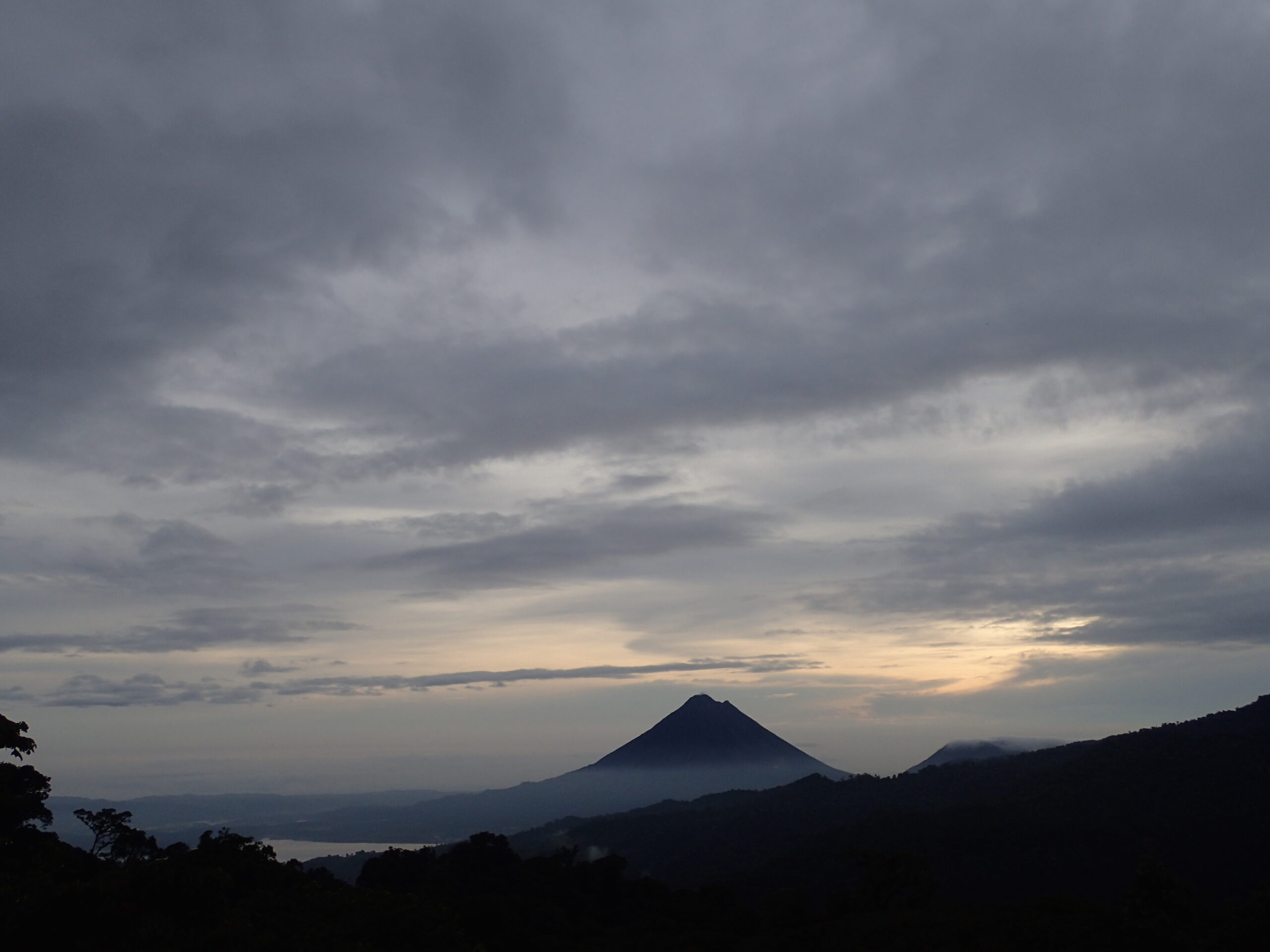

Tropical Orb Weaver Response to Web Disruption
Cody Whitlock and Amanda Rugenski
Odum School of Ecology, University of Georgia
Introduction/Background
Orb weaver webs are mostly 2-dimensional and suspended either vertical or horizontal. Their webs have many functions in their daily life such as catching and holding prey long enough for the spider to consume it (Soler & Zaera , 2016). These spiders do this with the structure of their web by using a non sticky frame on the outside for support and then connecting it to the center. They then add spirals of sticky strands that capture the prey.
Spiders have been found to make webs of varying sizes in order to fit the area they are using ( Barrantes & Eberhard, 2012). As a result of evolutionary processes spiders will maximize the space, they build their webs in.
Objectives & Hypothesis
- Our study examined how spiders assess the quality of their web, its location, and how much consistent disruption a spider will tolerate before abandoning their web.
- We hypothesized that spiders would react more quickly to higher levels of disturbance
Results
- The control group had the most left at the end with 5 spiders, while the partial destruction and corn flour treatment and complete destruction had the least left with 3 each.
- There was no significant relationship found between the treatments and reactions F(2,679)=0.028, p=0.972.
- There was also no relationship found between the day and the percent of spiders that left F(36)=0.285, p=0.081, R2=3.202.
- No relationship was found between the percent of spiders leaving and any of the weather variables.
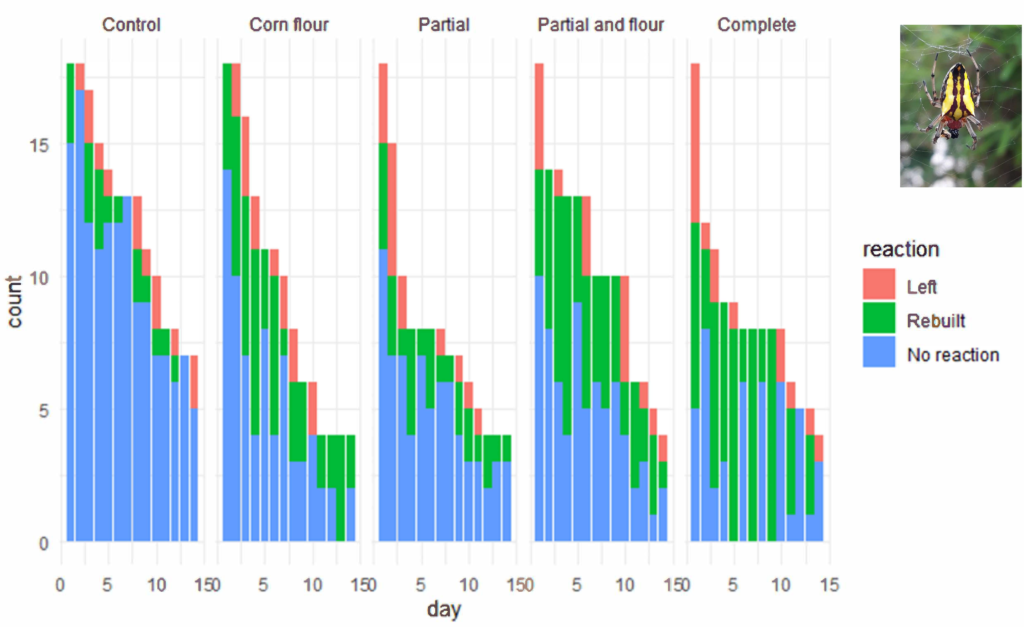
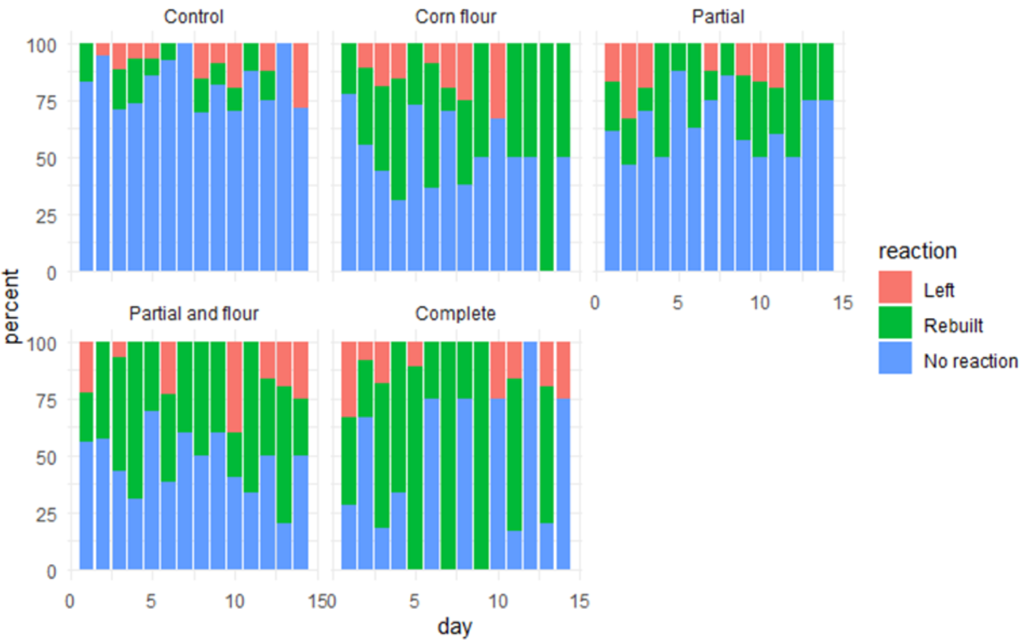
Methods
Study Location
Our study was conducted in San Luis de Monteverde, Costa Rica. We identified 90 occupied webs in the slats of a wrap around porch. These slats formed uniform habitats where spiders consistently built their webs.
Spider Genus
Alpaida., small orb weaving spiders.
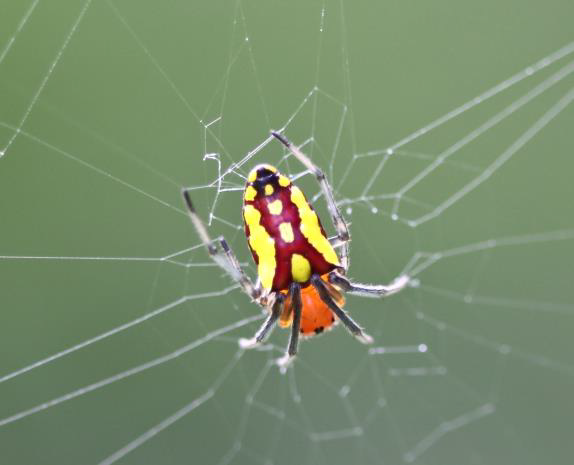
| Treatment type | Treatment Explanation |
|---|---|
| Control | Web was left fully untouched |
| Partial Destruction | Holes poked into the web using a stick |
| Corn Flour | Corn flour was taken and blown onto the web |
| Partial and Flour | A combination using both the partial destruction & corn flour treatments |
| Complete Destruction | Web was fully removed from using a stick |

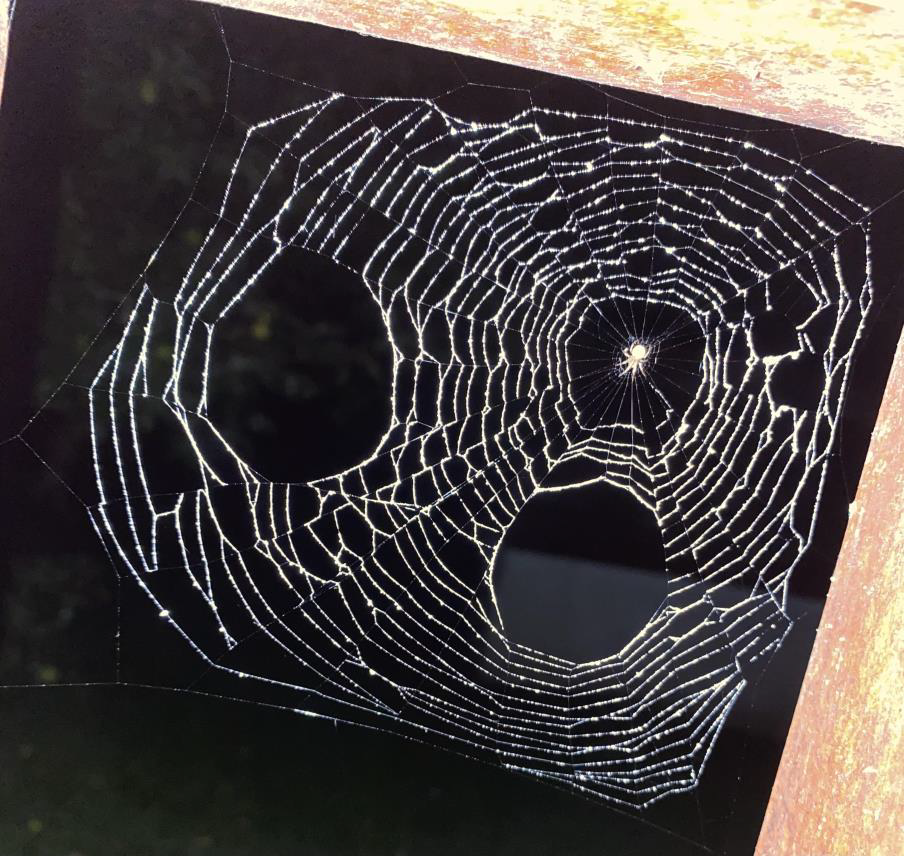
Data Collection
Each spider was assigned one of five treatments. We gave each web it’s assigned treatment every other day during the day. We checked the webs nightly and made one of three observations. The spiders would either 1) have no reaction, 2) rebuild their web, or 3) abandon their web.
Conclusions & Future Directions
- Contrary to our hypothesis not all spiders rebuilt their webs immediately if they were completely destroyed, this may be a result of a spider’s dietary needs, as they do not need to eat daily.
- There was no difference between the control and the other treatments, this could mean spiders rebuild their webs regularly.
- A continuation of this study could be to conduct the research in a lab to avoid other variables from affecting the results.
- Amendments to the methods could be to perform disturbances and observations at specific times.
- Spiders could also be videoed in order to assure that their reaction is observed.
Acknowledgements & Literature Cited
I would like to thank Ron Carroll, Kate Farrell, and Carolyn Cummins for assisting with various stages of this project.
Barrantes, G., & Eberhard, W. G. (2012). Extreme Behavioral Adjustments by an Orb Web Spider to Restricted Spaces: Extreme Flexibility in Web Construction Behavior in an Orb Web Spider. Ethology, 118(5), 438 449. https://doi.org/10.1111/j.1439 0310.2012.02029.
Soler, A., & Zaera, R. (2016). The secondary frame in spider orb webs: The detail that makes the difference. Scientific Reports, 6(1), 31265. https:// doi.org /10.1038/srep31265
Download Original PDF of Poster
